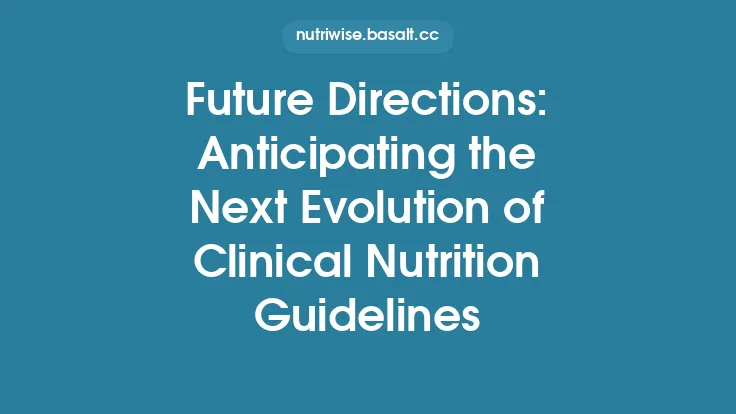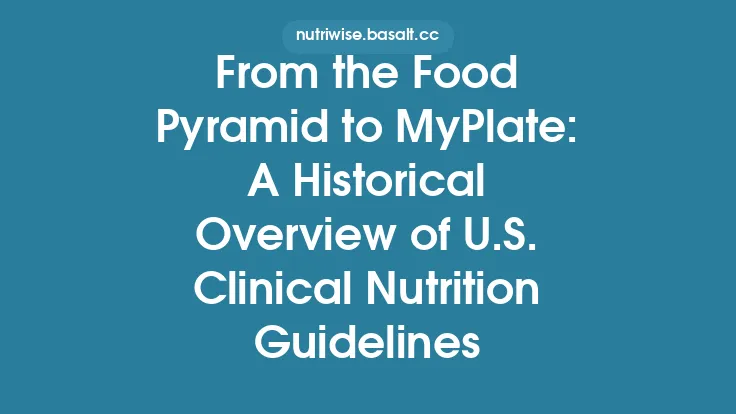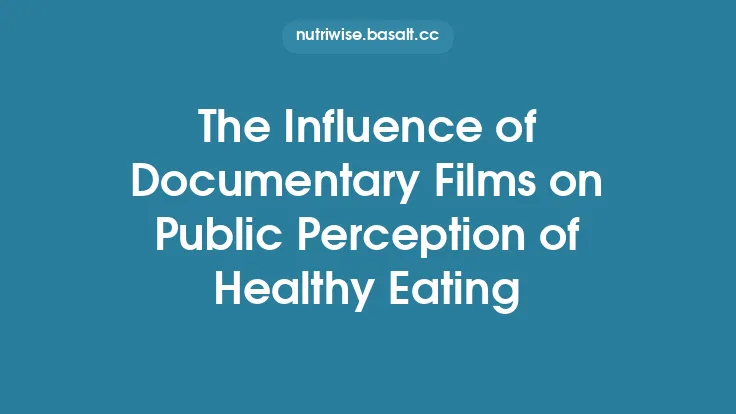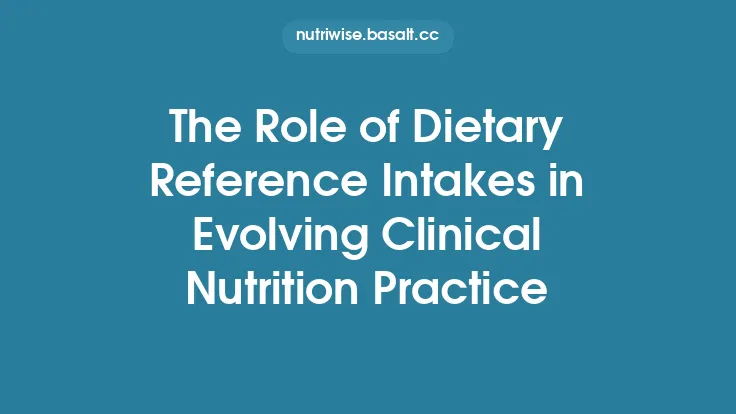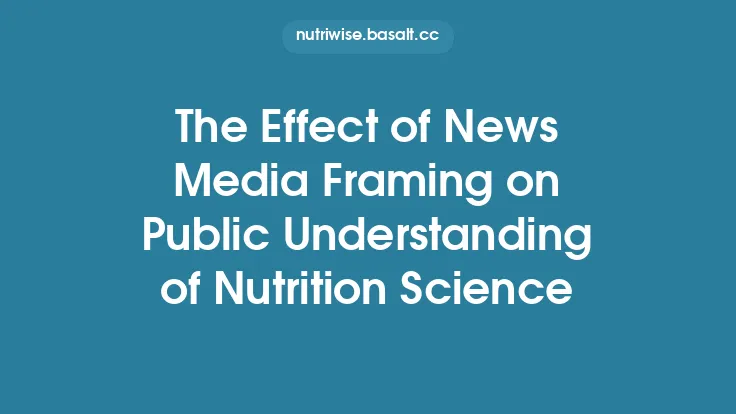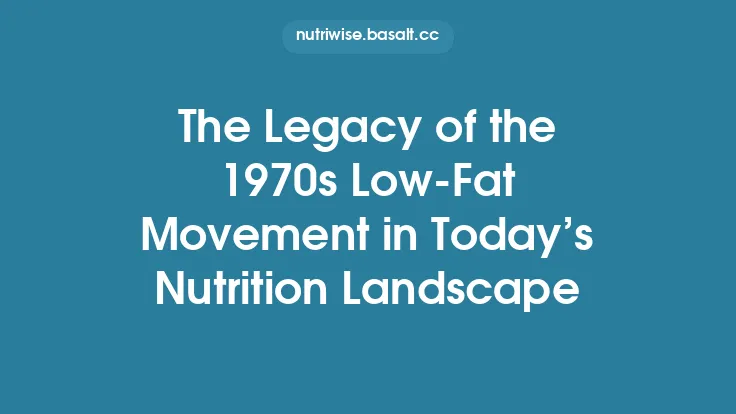Nutrition guidelines are a cornerstone of public health strategy, aiming to translate scientific evidence about diet and health into actionable recommendations for populations. While the development of these guidelines receives considerable attention, the equally critical task of evaluating their real‑world effectiveness often remains under‑explored. This article delves into the methodological foundations, key performance indicators, and analytical tools that researchers and policymakers can employ to assess whether nutrition guidelines are achieving their intended health outcomes in public settings such as hospitals, workplaces, correctional facilities, and community centers.
Why Evaluation Matters
Guidelines are only as valuable as the impact they generate. Without systematic evaluation, it is impossible to:
- Confirm causal pathways – Determine whether observed health changes stem from the guidelines themselves or from extraneous factors.
- Identify implementation gaps – Pinpoint where the translation from recommendation to practice breaks down.
- Inform iterative improvement – Provide evidence for refining recommendations, delivery mechanisms, or supporting policies.
- Justify resource allocation – Demonstrate cost‑effectiveness to stakeholders and funders.
Frameworks for Assessing Effectiveness
A robust evaluation typically follows a structured framework that integrates both process and outcome dimensions. Two widely adopted models are:
- RE-AIM (Reach, Effectiveness, Adoption, Implementation, Maintenance)
- *Reach*: Proportion of the target population exposed to the guideline.
- *Effectiveness*: Impact on health outcomes (e.g., blood pressure, BMI, nutrient biomarkers).
- *Adoption*: Number and type of institutions that formally adopt the guideline.
- *Implementation*: Fidelity to the recommended practices (e.g., menu composition, portion sizes).
- *Maintenance*: Sustainability of effects over time.
- Logic Model Approach
- *Inputs*: Resources (staff, training, materials).
- *Activities*: Specific actions (menu revisions, educational sessions).
- *Outputs*: Immediate products (number of meals meeting criteria).
- *Outcomes*: Short‑term (knowledge gain), intermediate (behavior change), long‑term (disease incidence).
Combining these frameworks allows evaluators to capture a comprehensive picture—from the initial exposure to the lasting health impact.
Key Metrics and Data Sources
- Nutrient Composition Audits
- *What*: Quantitative analysis of meals or food items against guideline standards (e.g., ≤5 g of saturated fat per serving).
- *How*: Use of nutrient analysis software (e.g., Nutritionist Pro, FoodWorks) linked to standardized food composition databases.
- Behavioral Surveillance
- *What*: Self‑reported or observed dietary intake data.
- *How*: 24‑hour recalls, food frequency questionnaires (FFQs), or digital plate‑waste studies.
- Health Biomarkers
- *What*: Objective measures such as serum cholesterol, fasting glucose, or micronutrient status.
- *How*: Periodic health screenings, electronic health record (EHR) extraction, or biobanking.
- Utilization and Cost Metrics
- *What*: Changes in healthcare utilization (e.g., reduced hypertension‑related visits) and cost offsets.
- *How*: Claims data analysis, cost‑effectiveness modeling (e.g., Markov models).
- Implementation Fidelity Scores
- *What*: Composite indices that rate adherence to guideline components (e.g., menu planning, staff training).
- *How*: Structured observation checklists, staff surveys, and audit logs.
Methodological Approaches
- Quasi‑Experimental Designs
- *Interrupted Time Series (ITS)*: Tracks outcome trends before and after guideline rollout, controlling for secular trends.
- *Difference‑in‑Differences (DiD)*: Compares changes in a treatment group (e.g., a hospital that adopted the guideline) with a matched control group.
- Randomized Controlled Trials (RCTs) in Institutional Settings
While logistically challenging, cluster RCTs—randomizing entire facilities to guideline implementation versus usual practice—provide the highest internal validity.
- Mixed‑Methods Evaluations
Qualitative components (focus groups, key informant interviews) uncover contextual factors influencing adoption and sustainability, complementing quantitative outcome data.
- Systems Modeling
Agent‑based or system dynamics models simulate how guideline adherence propagates through a population, allowing scenario testing (e.g., varying levels of staff training).
Case Illustration: Hospital Food Service Guidelines
*Background*: A regional health authority introduced a set of nutrition guidelines for all inpatient meals, emphasizing reduced sodium (<1,500 mg per day) and increased fruit/vegetable servings (≥5 cups per day).
*Evaluation Design*:
- Design: Interrupted time series with monthly nutrient audits over 24 months (12 months pre‑implementation, 12 months post‑implementation).
- Metrics: Sodium content per patient‑day, fruit/vegetable servings per patient‑day, average systolic blood pressure, readmission rates for cardiovascular events.
- Data Sources: Centralized food production software, EHR extraction, administrative claims.
*Findings*:
- Sodium decreased by 18 % within six months, stabilizing at a 22 % reduction after one year.
- Fruit/vegetable servings rose from 2.8 to 5.2 cups per patient‑day.
- Mean systolic blood pressure among hypertensive patients fell by 4 mm Hg (p < 0.01).
- 30‑day readmission for heart failure declined by 7 % (adjusted OR = 0.93, 95 % CI 0.88–0.99).
*Interpretation*: The guideline achieved measurable nutritional improvements and modest clinical benefits, supporting its continued adoption and scaling.
Common Challenges and Mitigation Strategies
| Challenge | Underlying Issue | Mitigation |
|---|---|---|
| Data Incompleteness | Inconsistent recording of menu changes or patient intake | Implement standardized electronic logging; integrate point‑of‑sale data with nutrition analysis tools |
| Variability in Implementation Fidelity | Staff turnover, differing kitchen capacities | Develop tiered training modules; conduct regular fidelity audits with feedback loops |
| Confounding Environmental Factors | Simultaneous health promotion campaigns | Use control sites; apply statistical adjustment for known confounders |
| Resistance to Change | Perceived loss of autonomy among food service managers | Engage stakeholders early; co‑design guidelines with end‑users |
| Longitudinal Follow‑up | Attrition in health outcome tracking | Leverage EHRs for passive follow‑up; incentivize continued participation |
Cost‑Effectiveness Considerations
Evaluations should extend beyond health outcomes to assess economic viability. A typical cost‑effectiveness analysis (CEA) proceeds as follows:
- Identify Costs – Capital (e.g., kitchen equipment upgrades), operational (e.g., higher‑cost fresh produce), training, and monitoring expenses.
- Quantify Health Gains – Quality‑adjusted life years (QALYs) derived from changes in disease incidence or mortality.
- Model Incremental Cost‑Effectiveness Ratio (ICER) – (ΔCost) / (ΔQALY). An ICER below the jurisdiction’s willingness‑to‑pay threshold signals economic attractiveness.
- Perform Sensitivity Analyses – Vary key parameters (e.g., price of produce, adherence rates) to test robustness.
Evidence from multiple settings suggests that well‑implemented nutrition guidelines can be cost‑saving or at least cost‑neutral when reductions in chronic disease burden are accounted for.
Future Directions in Evaluation
- Digital Trace Data – Harnessing cafeteria point‑of‑sale systems, wearable dietary trackers, and AI‑driven image analysis to capture real‑time consumption patterns.
- Equity‑Focused Metrics – Disaggregating outcomes by socioeconomic status, race/ethnicity, and geographic location to ensure guidelines do not inadvertently widen health disparities.
- Adaptive Evaluation Designs – Using Bayesian updating to refine estimates as data accrue, allowing rapid policy adjustments.
- Integration with Broader Health Systems – Linking nutrition guideline evaluation with population health dashboards to inform cross‑sectoral decision‑making.
Conclusion
Evaluating the effectiveness of nutrition guidelines in public settings demands a multidisciplinary toolkit that blends rigorous quantitative methods with contextual qualitative insights. By systematically measuring reach, fidelity, health outcomes, and economic impact, researchers and policymakers can move beyond the assumption that “guidelines work” to a demonstrable evidence base that informs continuous improvement. Such evergreen, data‑driven evaluation not only validates past investments but also charts a clear path for future nutrition policy innovations that are both health‑promoting and sustainable.
